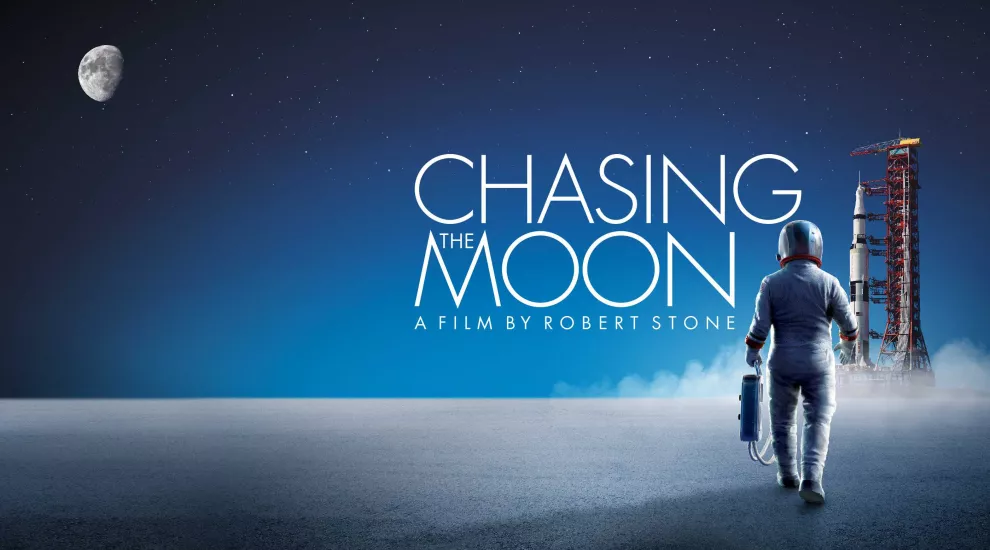
On July 8, 2019, PBS is proud to unveil Chasing The Moon - a film by Robert Stone, which reimagines the Space Race to the moon for a new generation; upending much of the conventional mythology surrounding the effort. The series recasts the Space Age as an inspiring period of scientific innovation, political calculation, media spectacle, visionary impulses, and personal drama. The series is a visual amalgam of lost or overlooked archival material, and features a wide cast of people who played key roles in the Space Race, such as astronauts Edwin "Buzz" Aldrin, Frank Borman, and Bill Anders. Also appearing in this program are Sergei Khrushchev, son of former Soviet premier Nikita Khrushchev and leading Soviet rocket engineer; Poppy Northcutt, a 25-year old “mathematics whiz” who gained worldwide attention as the first woman to serve in the all-male bastion of NASA’s Mission Control; and Ed Dwight, the Air Force pilot selected by the Kennedy administration to train as America’s first black astronaut.
To celebrate the premiere of Chasing The Moon, SCETV is releasing a series of educational blogs showcasing historical achievements in manned space flight during the "Space Race" to the moon. The April Blog is the first in this series, and will continue until the premiere of Chasing The Moon in July.
The month of May contains quite a few achievements in space flight - particularly with the early stages of the Space Race. Starting with May 5, 1961, astronaut Alan B. Shepard carried America's torch in the race following Yuri Gagarin's flight in April of that year. Alan Shepard, a U.S. Navy test pilot with a decorated career, was selected to be the first of the "Mercury Seven" astronauts to fly in space. Shepard's suborbital flight aboard Freedom 7 only lasted around fifteen minutes. The Redstone booster used to push Freedom 7 into space was not powerful enough to put a spacecraft into orbit, hence the term "suborbital." While Shepard may not have orbited the earth like Gagarin did, Freedom 7 was America's first step in the Space Race. Shepard became a hero in the eyes of the American people following his flight.
A little bit of fun trivia: there is a misconception about the name Freedom 7, and all the Mercury flights following. Some assume that the number seven was added at first to signify the Mercury Seven astronauts. While the concept makes sense, that is not how the tradition started, as "7" was added simply because Shepard's Mercury capsule was the seventh one of its kind made; capsules one through six had all been used in previous test flights. But the general public loved the idea of commemorating the Mercury Seven astronauts, and the moniker stuck anyway. That is why the number 7 is included in all the Mercury flight names!
May would also see the final flight of the Mercury program - May 15, 1963, would be the launch of Faith 7, piloted by Air Force test pilot Leroy "Gordo" Cooper. Faith 7 would mark the last time an American was launched alone to fly an entirely solo orbital mission. Cooper completed twenty-two orbits around the earth. Beginning during the nineteenth orbit, Faith 7 experienced technical difficulties - the spacecraft's internal systems began to shut down, one by one. Even though Cooper experienced loss of power, and increasing carbon dioxide levels, he remained calm and collected, and managed to safely return to earth, completely manual!
May 18, 1969 saw the launch of Apollo 10. Astronauts Tom Stafford, John Young, and Gene Cernan would conduct Apollo's "F" mission: the second test flight of the new "lunar module," this time in lunar orbit. Apollo 9 test flew the first lunar module, named Spider, in earth orbit, and Apollo 10 would serve as the "dress rehearsal" for Apollo 11's moon landing. Even though there was the temptation for Apollo 10 to attempt a moon landing, NASA took extra precautions to make sure that attempt would never happen. Author Craig Nelson, in his book Rocket Men, quoted Cernan as saying, "A lot of people thought about the kind of people we were: 'Don't give those guys an opportunity to land, 'cause they might!' So the ascent module, the part we lifted off the lunar surface with, was short-fueled. The fuel tanks weren't full. So had we literally tried to land on the Moon, we couldn't have gotten off." Apollo 10's mission was a success, and the stage had indeed been set for Apollo 11's historic landing.
Shifting back over to Project Mercury, May 24, 1962 was the launch of astronaut Scott Carpenter's Aurora 7 flight. Aurora 7 is the second of Mercury's orbital flights, the first being John Glenn's historic Friendship 7 flight, which took place that February. Aurora 7 was primarily focused on science experiments - such as studying the effects of liquids in zero gravity, making weather photographs using a hand held camera, and studying the earth's airglow layer. For re-entry, Carpenter was three seconds late firing his retro rockets, and as a result, landed 250 miles off course. Aurora 7 would be Scott Carpenter's only flight in his astronaut career.
More fun facts about the space race are to come with the upcoming June blog!

